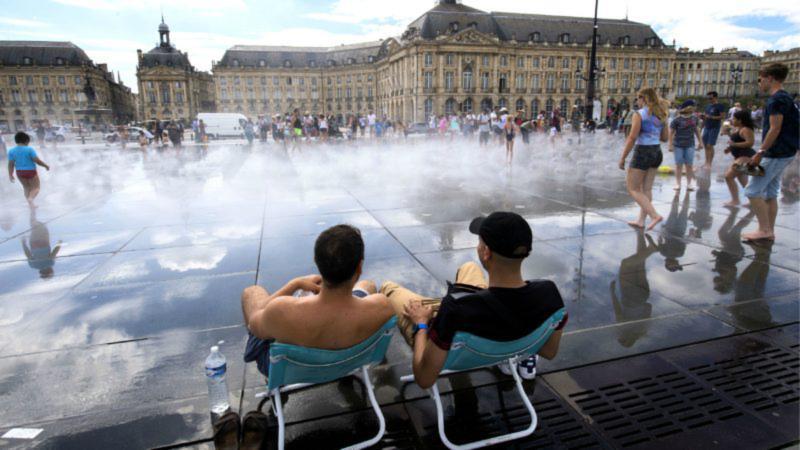The record heat observed across Europe this summer was made “at least ten times more likely” because of climate change, scientists have concluded in a new study released on Wednesday (27 September).
The World Weather Attribution (WWA), an international coalition of scientists assessing climate change influences on extreme weather events, drew those conclusions using a combination of observed temperature data and climate models.
They found that human-caused climate change had made the record-breaking 2017 summer temperatures in the Euro-Mediterranean region “at least 10 times more likely” than they were in the early 1900s.
“We found clear evidence of human influence on this summer’s record warmth — both in the overall summer temperatures and in the heat wave dubbed Lucifer,” said Geert Jan van Oldenborgh, senior researcher at the Royal Netherlands Meteorological Institute (KNMI).
“In many towns and cities across Southern Europe, there is now a one in 10 chance of seeing a heat wave as hot as we saw during this past summer every summer,” van Oldenborgh added. “In the early 1900s, a summer like the one we just experienced would have been extremely rare.”
A heat wave like the one dubbed “Lucifer”, which lasted three days at the beginning of August, is now “at least four times more likely to occur than in the early 1900s because of global warming,” the scientists said.
Lucifer was characterised by afternoon temperatures above 40°C in places like Corsica, Italy and Croatia, with minimum temperatures at night sometimes exceeding 30°C. The heat wave has been tied to a 15% spike in hospital emergency admissions in Italy.
According to the climate model simulations, by the 2050s, a summer like 2017 will be a typical summer in Southern Europe if greenhouse gases continue to increase in the atmosphere.
Dr Friederike Otto, a research scientist at the University of Oxford and deputy director of the Environmental Change Institute (ECI), said the results are entirely consistent with what scientists have predicted.
“Summers keep getting hotter. Heat waves are far more intense than when my parents were growing up in the 1950s. If we do nothing to reduce our greenhouse gas emissions, the kind of extreme heat we saw this past summer will be the norm when my young son is a grown man,” said Otto.
“It is critical that cities work with scientists and public health experts to develop heat action plans because such extreme heat will become the norm in the middle of the century,” said Robert Vautard, a researcher at the Laboratory of Climate and Environmental Sciences (LSCE) in France.
“Climate change is impacting communities right now and these plans save lives,” Vautard said.
A separate study released this summer by the European Commission’s Joint Research Centre (JRC) showed that Europe is likely to suffer more regularly from heatwaves with temperatures of above 40°C. Some regions of Eastern Europe may even be hit by new super heatwaves of above 55°C, warned the study which for the first time looked at temperatures in combination with relative humidity.
Source: http://bit.ly/2zbUst3











